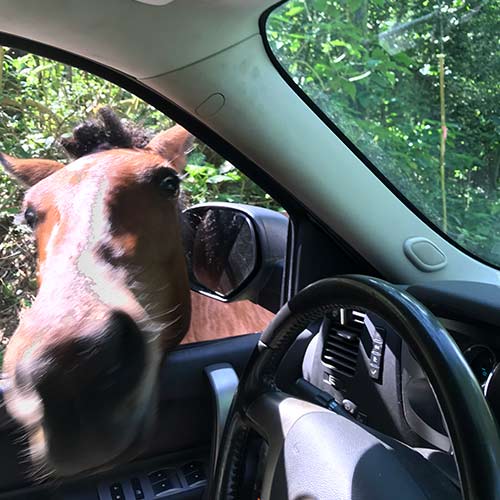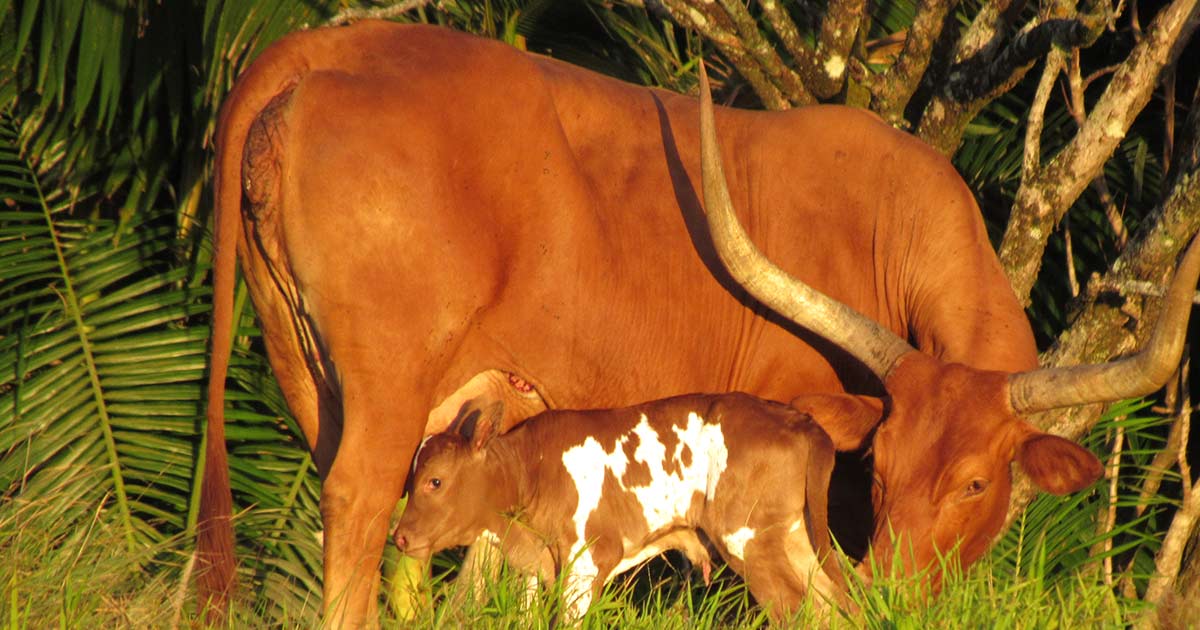There is so much to love about living on the Hamakua Coast. Rich Hawaiian history and culture, cooler temperatures, cattle and horses on a thousand grass-covered hills, tiny towns, expansive ocean views, farmer’s markets, rodeos and parades, Waipiʻo Valley, unique shops, small country grocery stores, scenic drives, to name just a few reasons. How about the majestic Ohiʻa and Koa forests, thick tropical vegetation, the peace and quiet of small town living, easy access to amenities, a slower pace of life. Got your attention now? Large homes on large acreage, tiny homes on postage stamp lots, and everything in between. This is life on the Hamakua!
Large homes on large acreage, tiny homes on postage stamp lots, and everything in between. This is life on the Hamakua!
Feeding a horse in Hawaii can break the bank!
Originally, Pat and I thought we would buy a home in Holualoa or Kealakekua, located in the hills above Kona. But bringing a horse along changed all of that. In 2011, a bale of hay in California cost between $7.00 and $18.00 dollars depending on the type of hay and the time of year. On the Big Island, that same bale now runs $38.00. not including delivery…if you can even negotiate delivery! My Palomino Appaloosa, Smoke, simply had to graze for at least half his daily ration or he would break our bank!

After four years of “shopping” we finally moved and rented our Hawaii Realtor®’s vintage yurt on twelve grassy acres in the tiny town of Paauilo, on the Hamakua Coast. Smoke could graze as we worked to get out of $600,000 in mortgage and credit card debt. That is another story entirely…you can read all about our amazing, life-changing journey in my book, My Year In A Yurt.
Towns along the Hamakua Coast…
But, over that four-year period, we drove every country road on the upper portion of this pristine coast. Starting at the north end of the 50+/- drive, you find Ahualoa, rich in farmland, perfect for raising all kinds of livestock, lots of acreage, privacy, green hills, a good amount of annual rainfall, and the most fog on the island. If you don’t like fog, purchase property at the lower end, closer to the highway. This helps to keep you out of the clouds, and makes for a quick jaunt to the highway.
Just a few miles south from Ahualoa you find the historic town of Honokaʻa. Quaint, yet full-service, Honokaʻa continues to celebrate its rich paniolo history through annual parades down the center of town, and rodeos and horse shows at the local riding arena. Honokaʻa offers a peaceful lifestyle with vintage and new subdivisions, plus large homes and land in the outer areas. Real estate in this area is very desirable so unless it’s a major fixer-upper, expect it to go rather quickly.

From the center of town, head eight miles to spectacular Waipiʻo Valley. If you don’t have an all-wheel drive vehicle (not 4-wheel drive), you will have to enjoy the stunning coastal views from the lookout above. Otherwise, you can take the hair-raising, single lane road down, down, down into the valley and the black sand beach. Watch out for the Waipiʻo ponies. They are often very friendly, even putting their head into your cab window in search of treats! And, on your way to or from the lookout, be sure to drop down into the tiny town of Kukuihaele to support the locals with the purchase of an ice cream or variety of locally-crafted gift items.
This is rural living at its finest, a slower pace of life.
Heading down the coast…
Hop back onto Highway 19, traveling toward Hilo, and you will see signs for Paauhau to the left – makai (0cean) side, and Kalopa to the right – mauka (mountain) side. You can’t see much from the highway except rolling green hills and grazing livestock. But, travel down or up these country roads and you will discover two peaceful communities with mostly larger acreage and unique homes of various sizes. Kalopa State Park is at the top and offers camping, the ability to ride your horse on their trails, picnics and retreats.
Next, you come to our little town of Paauilo. The sugar plantation era – Paauilo Camp is makai and offers tiny historic homes on postage stamp lots, available in the high $200,000 and up. There’s also a Fire Department and community gymnasium. Across the highway you find Earl’s Grocery Store, run by the same family for decades, and the tiny post office. That’s it as far as town amenities go…except for Donna’s Cookies and a very casual no-name Mexican restaurant as you head out of town. But, there are a number of nice subdivisions, plus acreage beginning at five acres, with rich, deep soil perfect for agriculture and livestock. If you head up Antone de Luz Road, named after the DeLuz family who developed so much of this area, you can enjoy the tall, slender eucalyptus forest planted at the close of the sugarcane era. Homes are often set back off the road for maximum privacy.
Next on the highway is the tiny town of Oʻokala, blink and you pass the turnoff! But there is much more to consider and explore as you continue…three large gulch crossings which are the main arteries for the tremendous amount of water cascading down from the mountains. Drive slow enough so you catch visions of the waterfalls and panoramic ocean and rocky coastline views. Laupahoehoe is a wonderful community, warm temperatures, calm trade winds, a local gas station and convenience store, school and community pool, plus the Laupahoehoe Railroad Museum. We have dear friends who live in this community and raise Watusi cattle. I am pretty sure this is how the Wah Watuzi dance got its name!
 Watusi cattle on the Hamakua Coast.
Watusi cattle on the Hamakua Coast.
This little Watusi calf in the above photo is named Lahaina, because it was born Tuesday, May 26, 2020, which is the Lahaina noon. Thatʻs when, in the tropics, the sun is directly overhead and at noon there is no shadow. It happens twice per year in Hawaiʻi.
Papaʻaloa, Ninole and Umauma are the final three main towns at the south end of the Hamakua Coast. Again, land and homes in these areas offer options from small properties to larger acreage, homes with and without ocean and sunrise views, farmland, ag, or the tiny personal garden of your dreams. You will experience more rain as you are about 20 minutes outside Hilo. But, it’s worth it for the combination of warm sunny days and rainfall that keeps the promise of lush and green landscapes! You’ll want to frequent the Papaʻaloa Country Market and Cafe for their tasty bakery items, breakfast and lunch menu, plus those necessary grocery items. Ninole has the country’s smallest post office.
The benefits of living on the Hamakua really boils down to lifestyle.
This is rural living at its finest, a slower pace of life with time to not only appreciate but cultivate nature, to garden, possibly live off-grid, kick back and hear the chirping, clucking, lowing and whinnies of those creatures that also call this amazing place “home.” To enjoy sunny days as well as plenty of liquid sunshine that keeps this tropical paradise blooming year-round.
We have made the Hamakua Coast our home. I invite you to make it yours too. For real estate information, please visit my website at: jmcgeehan.clarkhawaii.com.


